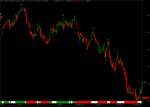Stock Portfolio Organizer
The ultimate porfolio management solution.
WiseTrader Toolbox
#1 Selling Amibroker Plugin featuring:
Elliot Fractals for Amibroker (AFL)
The Indicator plot Elliot Fractals on The Price Chart
Screenshots
Similar Indicators / Formulas
17 comments
Leave Comment
Please login here to leave a comment.
Back
hey why is that u have blocked most of the good ones then whats the point in visiting this site if u only have to go through the ones which are not the best
there are limited number of AFLS out there and u hardly find new ones does that men ppl who wnt to use thse cant , wht do u want that u are doing this
i really want this formula can someone help me
and id rather not post some crappy formula and hamper someones trading and money
i agree!
Very Good indicator
ممنون م
بسيار عالي بود
ممنون
let me try it
Many Thank, I’ll try.
Thanks you.
thank you!
i cant copy code afl. please help me
Comment hidden - Show
very good
عالی
i agree
Comment hidden - Show